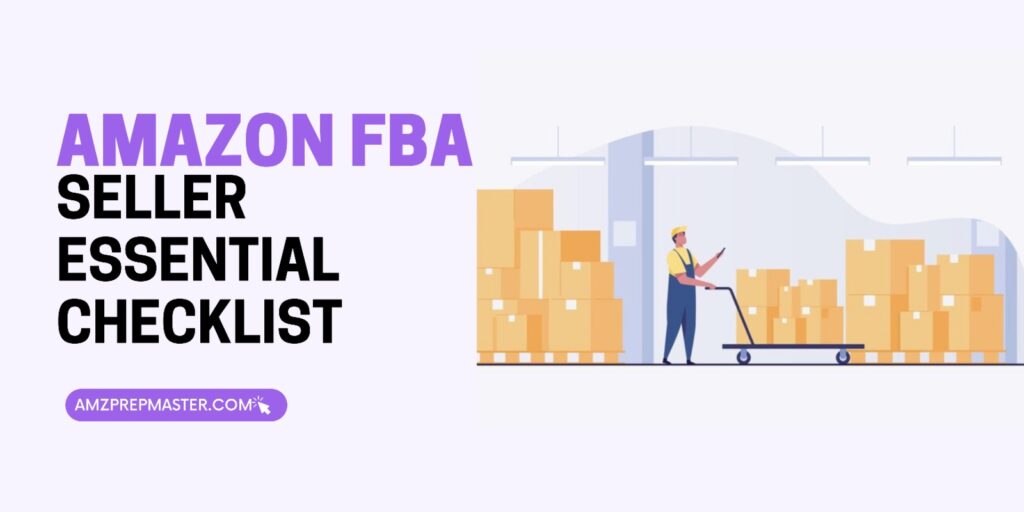The Fulfillment by Amazon (FBA) program has revolutionized e-commerce for many sellers. However, navigating the complexities of FBA requires careful preparation and adherence to Amazon’s guidelines. This checklist will help you ensure that your FBA products meet all requirements and are optimized for success.
Understand Amazon FBA
Before diving into the checklist, it’s crucial to grasp what Amazon FBA entails. FBA allows sellers to send their products to Amazon’s fulfillment centers, where Amazon handles storage, packaging, shipping, and customer service. This frees sellers to focus on business growth. To leverage FBA effectively, you must adhere to specific requirements and best practices.
Research and Choosing a Product
- Identify Opportunities: Use tools like Jungle Scout or Helium 10 to research product demand and market competition.
- Calculate Costs: Assess manufacturing, shipping, and Amazon fees to evaluate profit margins. Explore cost management tips here.
- Check Restrictions: Review Amazon’s guidelines to ensure your products are not restricted and don’t require additional approvals.
Sourcing Your Products
- Find Reliable Suppliers: Use platforms like Alibaba or local sources to find suppliers that meet your quality and quantity standards.
- Request Samples: Always order samples before bulk purchases to ensure product quality.
- Negotiate Terms: Discuss pricing, minimum order quantities, and shipping terms with your suppliers.
Product Preparation
- Labeling: Ensure each item has an Amazon-approved label. Incorrect labeling can lead to delays or additional fees.
- Packaging: Use appropriate packaging materials such as poly bags, bubble wraps, or boxes based on your product type.
- Bundling: For bundled items, ensure they are correctly grouped and labeled as a single unit.
Open An Amazon Seller Account
- Choose an Account Type: Decide between Individual or Professional accounts. A Professional account is
more cost-effective if you plan to sell over 40 items per month.
- Complete Your Profile: Provide all necessary business and tax information, including bank details for payouts.
Setting Up Your FBA Inventory
- Create Product Listings: Use relevant keywords to optimize your listings. Include clear images, detailed descriptions, and bullet points to highlight key features.
- FBA Setup: Navigate to the FBA section in your seller account to establish a shipment plan. Follow Amazon’s recommendations for shipping your products to their fulfillment centers.
Shipping Products to Amazon
- Choose Shipping Method: Decide between air freight or ocean shipping based on cost and urgency. Air freight is faster but usually more expensive.
- Create Shipping Labels: Download and print Amazon shipping labels. Ensure they are clear and scannable. Track your shipment to confirm it arrives at FBA on time.
Inventory Management
- Monitor Stock Levels: Use Amazon’s inventory management tools to keep track of your stock and avoid running out.
- Set Restock Alerts: Enable automatic alerts for low inventory levels to prompt timely reordering.
- Analyze Sales Data: Review sales trends regularly to manage your inventory more effectively.
Marketing Your Products
- Use Amazon Advertising: Leverage Amazon Sponsored Products to enhance visibility and drive sales.
- Promote on Social Media: Showcase your products on social media to reach a larger audience and increase sales.
- Request Reviews: Encourage customers to leave reviews to boost product visibility and credibility.
Customer Service and Feedback
- Respond Quickly: Address customer issues promptly to maintain high ratings. Handle returns efficiently and adhere to Amazon’s return policies.
- Request Feedback: Ask customers for feedback post-purchase to understand their experience and improve your service.
Compliance and Regulations
- Understand Amazon Regulations: Familiarize yourself with Amazon’s selling rules to avoid fines or account suspension. Stay updated with policy changes here.
- Tax Obligations: Be aware of tax rules applicable to Amazon sales, including sales tax collection.
Conclusion
Launching an Amazon FBA business requires meticulous preparation and adherence to Amazon’s guidelines. By following this checklist, you can ensure your products are well-prepared for FBA, comply with Amazon’s policies, and maximize your sales potential. For further guidance on building a successful Amazon business, visit AMZ Prep Master.

